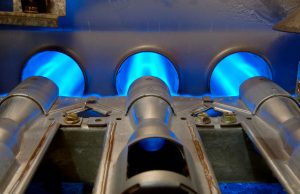 We’ve enjoyed a long Indian summer these past few weeks, which can be a great boon for local homeowners looking to replace their heating system. The more planning and preparation you can do in anticipation of installing a new heater, the better off you’ll be. A good technician can help you with the specifics of your home and install the unit that is best suited to your needs, but it helps to understand the basic factors that you need to consider.
We’ve enjoyed a long Indian summer these past few weeks, which can be a great boon for local homeowners looking to replace their heating system. The more planning and preparation you can do in anticipation of installing a new heater, the better off you’ll be. A good technician can help you with the specifics of your home and install the unit that is best suited to your needs, but it helps to understand the basic factors that you need to consider.
Every home is unique and therefore every heater needs to reflect the specific needs of the home it keeps warm. Determining those factors can go a long way towards ensuring that your new heater is exactly what you need it to me. Here are the three most important, along with a brief explanation.
1. Power Levels
Heating systems need to follow what we call The Goldilocks Rule: neither overpowered nor underpowered, but just right. If the system is underpowered, it’s going to run and run all day without ever getting your home comfortable. Obviously, that will drive up your monthly costs and place a lot of excess strain on the system, as well as leaving your home uncomfortably cool.
What most people don’t realize is that an overpowered system can be just as troublesome. By heating the home too quickly, it engages in a process known as short cycling, where the heater turns on and off rapidly, numerous times throughout the day. That can be quite hard on the system, and similarly raise both monthly rates and wear and tear.
Any proper installation involves careful evaluation of your home and selecting a heating system with power levels that are perfectly balanced against its needs.
2. Efficiency
Once the power levels of the system are selected, the next step involves finding the system with maximum efficiency levels for your budget. Heaters measure efficiency in terms of AFUE ratings, which stands for Annual Fuel Utilization Efficiency. It’s a simple percentage, marking how much of the furnace’s energy goes into actually heating the home. The higher the rating, the more efficient the system. You should look at AFUE until the power levels have been determined (an underpowered furnace with a higher AFUE rating won’t help you very much), but once you know what the size is, you should find the unit with the higher AFUE rating you can afford.
3. Additions
The installation of a new heater is also a good time to install any additions or upgrades to your system that you may need. For example, if you have an older thermostat, now is a good time to install a new smart thermostat. Or if your home gets excessively dry in the winter, a humidifier can be installed along with the heater: helping improve performance while providing other benefits as well. Talk to your technician about the best possible additions that suit your home and fit your budget.
For quality heating system installation in homes throughout the Sacramento, CA area, contact the pros at Sierra Pacific Home & Comfort, Inc. today!
